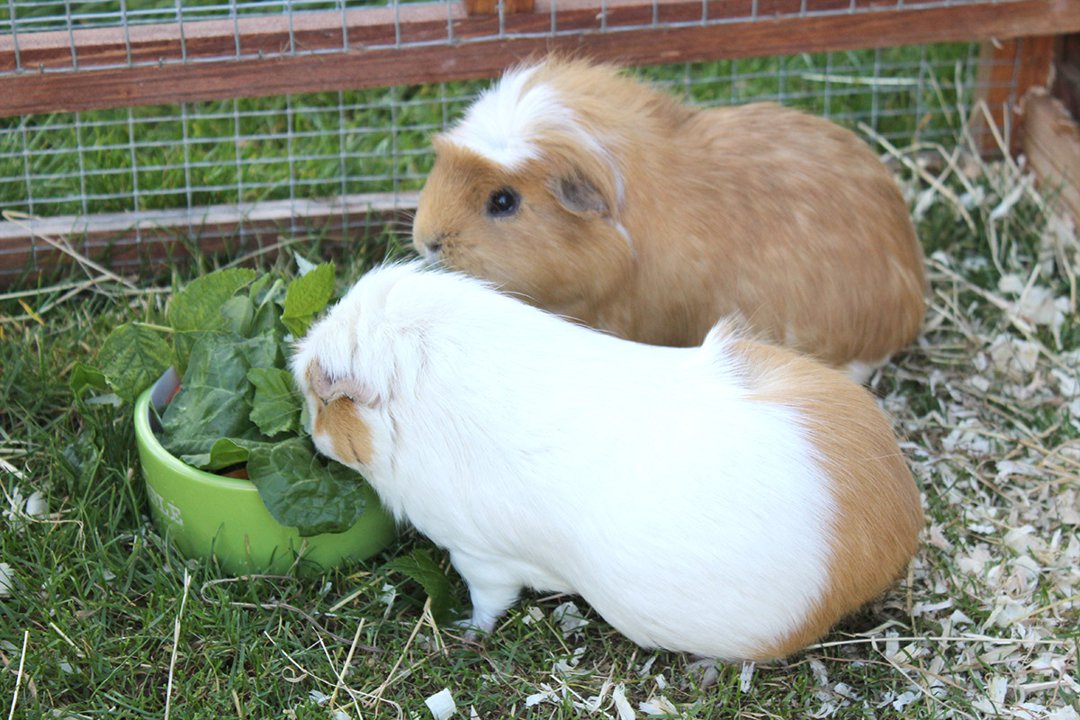Introducing a new guinea pig
Bringing a new guinea pig home can be an exciting time but you (and your guinea pig) might be a little apprehensive about what might lie ahead.
Twice as nice
You may have bought your guinea pigs together as a pair – it’s usually much easier to do this with young guinea pigs and rehoming shelters sometimes have bonded adult pairs to re-home. Assuming that the guinea pigs are already accustomed to living together, it’s just a matter of making sure the new guinea pigs have an easy introduction.
If they have been living indoors don’t immediately put them in an outdoor hutch, especially in cold weather or overnight. Give them time to adapt to the change in temperature by finding an environment that’s similar to the one they have left and gradually increase the time they spend in the new environment.
Too much change can be distressing so during this period you might want to use a cage indoors that’s then placed in the outdoor hutch for short periods, before giving access to the wider outdoor space. Anything you can do to make transitions more gradual will reduce stress for your new guinea pig.

New guinea pig introductions
Many guinea pigs enjoy communal living but care needs to be taken when introducing them to either a single guinea pig or to an established group of guinea pigs. Here are some useful tips
- Make sure you choose the right pair and group combinations. You can read more about this here.
- Make sure your new guinea pig is healthy and that the group is too
- Keep the new guinea pig in a separate hutch or cage and place it next to the resident guinea pigs. This will allow them to get used to the sight and sound of each other. You may want to put the cages further apart and bring them closer over time
- Watch for positive behaviours like positive noises, attempts to sniff each other and popcorns (jumps that indicate the guinea pig is happy). If you see negative or aggressive behaviours, go back a step and slow the process down.
- Scent swap by swapping over bedding and toys between the cages to allow your existing guinea pigs to sniff the new guinea pig. It’s a great way of helping them accept each other.
- Feed the guinea pigs side by side but still in their respective cages to create positive associations.
- When it’s time to introduce face to face, do so on neutral territory so no one feels they need to guard their home. Make sure there are no closed areas or blind tunnels where your new guinea pig can be cornered by another.
- Once everyone is happy introduce the guinea pigs to a newly cleaned out cage. Remove any beds or toys that would allow a guinea pig to be trapped by others. Gradually reintroduce more toys or tunnels over time if all the guinea pigs seem happy.
- If the guinea pigs fight, be prepared to separate them using a thick towel to lift the new guinea pig out. Guinea pigs don’t often bite but may nip if under attack.
- Keep a close eye on newly paired guinea pigs over the coming weeks to ensure everyone is happy.





